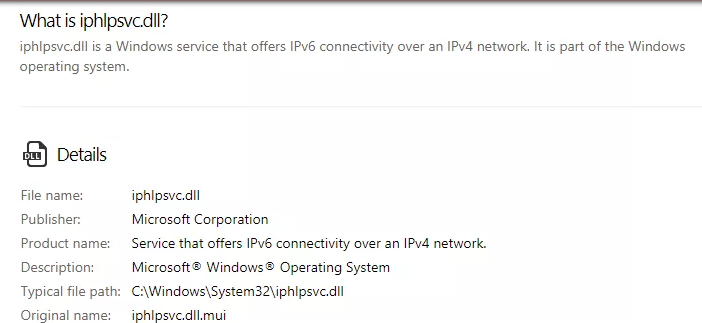NEWS
Silicon Valley is fascists free
Mischaracterizing those who work in technology as secretive conservatives is both inaccurate and counterproductive.
A reporter for the New York Times decided to publish a piece revealing Scott Siskind’s real name, prompting him to delete his entire blog, Slate Star Codex, in the summer of 2020. (Siskind, who now writes at Astral Codex Ten, had long blogged under the pseudonym of Scott Alexander). Eight months later, the story has been published, and it’s just as bad as Siskind anticipated it would be. The article’s most concerning aspects, in my opinion, are the unwarranted generalisations it makes regarding Slate Star Codex readers and the ethos of the technology business. To put it frankly, I think the piece reinforces an inaccurate generalisation about the political leanings of Silicon Valley’s population. And I don’t think it’s helpful for America’s relationship with one of its signature sectors to perpetuate this misperception.
Who were the people who read Slate Star Codex?
Cade Metz, the writer of the Times piece, had this to say about the people who read Slate Star Codex:
The Rationalists, who called [Slate Star Codex] home, were an intellectual movement that sought to reevaluate the world using reason and logic. White nationalists and neofascists were among those who spoke up. According to [economic David] Friedman, “social justice warriors” are the only ones who have to fight to be heard. The minds of Silicon Valley were revealed in Slate Star Codex. It’s important to try to get into their heads since the choices made by tech businesses and their executives have far-reaching consequences. Mr. Alexander, who had previously written under his given name, Scott Siskind, and his blog became required reading due to the attractiveness of the concepts within Silicon Valley.
According to [Sam Altman], it was required reading for “the people inventing the future” in the IT field. Paul Graham, creator of Y Combinator, lent his name to the Slate Star Codex as an advocate. Patrick Collison, CEO of Stripe, a start-up that went on to raise a billion dollars, read it. Investors like Marc Andreessen and Ben Horowitz were among the blog’s Twitter followers. This makes for an interesting story: the technologists who are creating our future have been indoctrinated with right-wing ideologies after reading a popular blog. The problem is that I don’t think the article provides enough evidence to back up the claims it makes.
If we take Silicon Valley as an example, is it true that the Slate Star Codex was formerly considered “required reading”? According to Google, there are around 387,000 tech professionals in the San Francisco Bay Area. A Reddit user in 2016 estimated that the site had 3,400 regular readers, whereas Siskind’s survey of his subscribers in 2020 received around 8,000 responses. The Times received about 7,500 signatures on a petition asking them to keep Siskind’s identity secret.
This means that even if Slate Star Codex’s regular readership was four times as great as the largest of these percentages, it still would have meant that no more than 8.3 percent of Silicon Valley, or an even smaller percentage of the broader national tech industry, could have consistently read the site. Not all of Siskind’s readers were necessarily tech-savvy, by the way. Actually, the opposite is true. Around 40% of Siskind’s 2020 survey respondents worked in the computer industry: This suggests that a disproportionate number of Slate Star Codex’s readers actually work in the tech industry. However try to avoid generalisations (or as, a Rationalist would call it, base rate neglect, or the Representativeness Heuristic). The fact that 40% of Slate Star Codex readers identified as “techies” does NOT imply that the same percentage of “techies” also read the Slate Star Codex.
That is to say, Slate Star Codex was probably just a small part of the overall technology business. Was this subset disproportionately influential, rich, or well-off? Sam Altman and Paul Graham, two heavy hitters at the YCombinator accelerator, were undoubtedly huge fans. It was likely just one of Patrick Collison’s many, many sources of intriguing occasional information; he once dubbed me “more logical than the Rationalists” (thanks, Patrick!!). I’ve also met a fair amount of VCs, and to my knowledge, none of them have ever used any of the lingo from the Slate Star Codex. So while it’s possible that many prominent figures in technology were influenced by Slate Star Codex, I think we need a lot more proof before drawing any firm conclusions.
How political is Silicon Valley?
The idea that Nazis are abundant in Silicon Valley is a persistent source of annoyance for me, and I believe that Metz’s Times report contributes to this idea. The truth is that the tech industry is dominated by leftists. Crowd Pac conducted a poll of political donors in 2014, and their responses were organized by sector. After academics and the entertainment business, the “online computer services” sector (Silicon Valley) was the third most liberal. It was far more open-minded than traditional print media. On the right, there appears to be a solitary mass of conservatives. Among them are few more well-known conservatives like Peter Thiel. Nonetheless, they stand out as radicals in a traditionally liberal field. This sample is likely to be skewed towards the wealthy because these are donors, not voters.
This is supported by data from elsewhere. OpenSecrets.org reports that in 2020, 92% of internet industry donations went to Democrats. This is supported by surveys of IT startup founders. Silicon Valley founders are overwhelmingly Democrats, despite being more skeptical of regulation and unions than the average Democrat (which is to be expected, given their occupations). They are even more progressive on social issues (gay marriage, abortion, gun control, etc.) than the typical college-educated Democrat. Despite the fact that it seems to go against their class interests, they are nevertheless big supporters of government redistribution. They also rank lower on measures of authoritarianism and racial hostility than the typical Democratic voter base. To sum up, tech startup founders are your typical liberal nerds.
Everyone who has any kind of regular contact with those working in the tech industry is already well aware of this. Black Lives Matter protests had widespread support from the tech industry and its top executives. After the failed coup attempt on January 6th, they also effectively blocked former President Trump and many of his core supporters from using the internet. In addition, employees in the computer industry are continually pressuring their managers to become even more liberal than they already are. No fascists will feel comfortable here. As a technology correspondent, Metz should be well-versed on this information. Thus, he should understand that a decade after the publication of Slate Star Codex, technology has not become fascist. Hence, the narrative appeal of a solitary Rationalist site quietly spreading right-wing beliefs among Silicon Valley’s princes has not yet been borne out by the evidence
If Silicon Valley as a whole isn’t right-wing, then what about the Rationalists?
My evidence here is entirely anecdotal. In general, I get the impression that they are on the periphery of the technology sector. Siskind practices psychiatry as a profession. Only big Rationalist I directly know, Julia Galef, is a podcaster. I was able to identify a quant trader, a lawyer, a Wall Street analyst, the founder of a nonprofit, a social worker, a language interpreter, and several people whose only apparent job is working in the Effective Altruism movement, in addition to the philosopher Will MacAskill, who is one of the movement’s leaders. In fact, Eliezer Yudkowsky, who is sort of an A.I. researcher, is the only big Rationalist figure I could locate who is actually in tech.
The Rationalists appear to be on the fence about certain key political issues. The proponents of Effective Altruism seem to be liberals (Update: Matt Yglesias has a great post that goes into some of what they want). Both Yudkowsky and Galef, at heart, are uninvolved, moderate types. And Siskind, though he’d probably be angry with me for saying this, seems to be a conservative, or whatever passes for a conservative in this odd new period of politics. His criticism of Black Lives Matter and (particularly) the feminist movement places him on the political right in the San Francisco Bay Area. (Update: and as others have noted, he is not coy about holding some right-wing beliefs in private.) IQ, school vouchers, and the employment of women are just a few of the topics on which we’ve disagreed in the past. The Rationalists don’t strike me as particularly political, though. Instead, they appear preoccupied with their own brand of arcane lore. Some Rationalists are upset with me because I sometimes find this esoterica to be quite silly. Such is life. My impression of Rationalism is not that it is a fascist or secretly fascist movement, despite what I would call Siskind’s conservatism.
In regards to the Nazis who frequent Scott’s comment section, I believe he should have banned them a long time ago. However, I haven’t seen any proof that Nazi ideas have taken hold among the Rationalists, and I haven’t seen any proof that Rationalist ideas have had more than a very small influence on the technological world either.
Conclusion
To sum up, the story of a conspiracy to infiltrate the minds of the future’s most influential people with fascist ideas spread through Rationalist blogs is enticing, but it’s not well supported by the facts. Tech entrepreneurs are your typical liberal nerds, and Rationalism is just a small subculture that obsesses over Bayes’ Rule, utilitarianism, and robots. While I agree that the tech industry could improve in some areas, I do not believe this to be one of them.
NEWS
woodgrain my tools

Are you looking for information on woodgrain my tools? You have come to the right place! In this blog post, we will provide a step-by-step guide on woodgrain my tools
Woodgrain Login
Power Tools – Woodgrain
www.mytoolswoodgrain.com/
Mytools Woodgrain Login – MetaBenefit
woodgrain mytools – WOW.com – Content Results
Mytools woodgrain
Woodgrain Tool – Available At Blue Star Antiques
Mytools woodgrain com
Mytools woodgrain millwork
Mytools Woodgrain
Mytools woodgrain
Woodgrain Tool – Available At Blue Star Antiques
How To Use A Wood Grain Tool: It’s So Easy – Chas’ Crazy Creations
Wood Grain Rocker Tool – Heirloom Traditions Paint
Wood Grain Tool, 5Pcs Wood Grain Roller Soft Rubber Wood …
NEWS
Rajkotupdates.News : Work Permits for Indian Spouses of H-1B Visa Holders Approved by the U.S.!

Indian H-1B visa holders’ spouses, take note! Newly released information is exciting: the United States has issued work permits to eligible individuals, allowing them to pursue their professional goals and contribute to the economy.This is a monumental shift that has the potential to profoundly affect the lives of tens of thousands of people across the country. Prepare yourself for the most recent rajkotupdates.news report!
What Exactly Are Work Permits?
- Spouses of U.S. citizens from outside the U.S. who are sponsored by their sponsors and who meet other criteria can apply for work visas.
- Spouses from outside the United States can get work permits to lawfully work in America. Furthermore, they are permitted to remain for longer than visitors who are not immigrants.
- US Citizenship and Immigration Services (USCIS) documentation and an interview may be required to secure a work visa, but the process is otherwise simple.
- After you obtain your work permit, you must provide it when you apply for a visa or request entry to the United States.
To Whom Do Work Permits Apply?
If your spouse is in the United States on an H-1B visa and you are an Indian citizen, you may be eligible for a work permit.
The following conditions must be met before you can apply:
- You and your American spouse must be more than just dating.
- Your U.S. companion must hold a current H-1B visa.
- You can’t get married if you cheated or lied about anything.
- You and your future spouse in the United States must have met beforehand.
- You need to prove that no American citizen or permanent resident is qualified for the position you’re applying for.
Your fourth step is to visit the U.S. Department of State’s Bureau of Citizenship and Immigration Services (BCIS) to apply for a work visa. Be sure to include all of the required paperwork with your application because the review process can take many months.
What Do You Need to Do to Get a Work Permit?
If you are Indian and married to a U.S. citizen, you might be eligible for a work visa.
- You must be financially stable in order to qualify for an H-1B visa.
- Have a representative of your own country’s government witness your wedding.
- Carry a valid passport. If you meet all of these requirements, then you can submit your application to USCIS. Your partner’s full name and U.S. address are required pieces of information.
- You’ll also need to present documentation that you have the means to support yourself financially and that you’re legally able to receive a work visa, such as a marriage licence. You may be eligible to file an appeal if you are denied a work visa.
How Do You Apply for a Work Visa?
The process of obtaining a work visa varies from country to country. In most cases, you’ll need to demonstrate that you’re capable of supporting yourself and your partner.
It’s possible that you’ll also need to provide evidence of your relationship status and health insurance coverage. In some countries, you need a visa before you can apply for a work permit.
After obtaining a work visa, what steps should one take?
- Submit an application for a change of status with the Department of Homeland Security (DHS) after obtaining a work permit.
- To begin the Adjustment of Status procedure, you must provide evidence of your marriage and establish that you otherwise qualify.
- If your status adjustment is approved, your spouse will be entitled to apply for an immigrant visa and join you in the United States.
Conclusion
Spouses of Indian citizens holding H-1B visas are now eligible to apply for work authorization in the United States. More qualified Indian workers may find employment in the United States as a result of this. The work permits would be valid for up to six years, allowing Indian nationals to compete for jobs that would normally be out of reach due to a lack of education, training, or experience. This is part of President Trump’s strategy to reduce the need for foreign labour and halt the influx of illegal immigration.
NEWS
After the developer of Amphetamine complained to Apple about the software being removed because of its name, the company ultimately decided to allow the Mac app have its present name and logo (William C. Gustafson / GitHub)

Amphetamine is a free application for the Mac that allows the user to configure how long the computer will remain awake. The 2014 release has been well received by users, with over 432,000 downloads and five-star ratings on the Mac App Store. MacRumors has previously highlighted the app as well. Amphetamine has been available on the Mac App Store for six years before Apple unexpectedly removed it for not following their rules.
After a representative from Apple contacted Amphetamine’s developer, William Gustafson, to inform him that the software will be withdrawn from the Mac App Store on January 12, 2021 if several adjustments were not made, Gustafson posted a lengthy report on GitHub describing the situation. The agent stated that the following condition was not met by Amphetamine:
Tobacco and e-cigarette, illegal drug, and excessive alcohol consumption-promoting apps are not allowed in the App Store. Any app that targets kids or encourages them to use illegal drugs or alcohol will be removed. Tobacco, marijuana, and other controlled substances cannot be sold, and neither can they be facilitated for sale outside of legal pharmacies. According to reports, the Apple official stated “It seems like your software encourages people to take drugs in the wrong way. In particular, your app’s name and image both make allusions to illegal drugs and medicines.” As amphetamine is available only with a doctor’s prescription in the United States, Gustafson said, it doesn’t encourage drug abuse. He added that the film does not advocate for the “irresponsible, illegal, or recreational” use of amphetamine.
Amphetamine (the app) can be used in the same way as amphetamine (the chemical molecule) can be used to keep humans awake and focused.
To counter the claim against the app, Gustafson filed an appeal and started a petition on Change.org, which has since received over 500 signatories. And just now, he tweeted that he had just gotten off the phone with the App Review Board and that Amphetamine would still be available in the Mac App Store. It’s surprising that Apple forced Amphetamine to change its name after they highlighted it in a Mac App Store Story and the software received 1,400 reviews on the Mac App Store. Gustafson also claims to have had numerous conversations with Apple’s App Review Team on Amphetamine, but this issue has never come up before; the cause of this is a mystery.
-

 Marketing1 year ago
Marketing1 year agoHow Often Should You Publish on a Blog?
-

 Technology1 year ago
Technology1 year agoIPHLPSVC Services Tuning? Windows 7/10
-

 Technology1 year ago
Technology1 year agoHow AI Can Transform Healthcare
-

 REVIEWS1 year ago
REVIEWS1 year agoBest Gaming Communities Like F95zone
-

 OUTDOOR1 year ago
OUTDOOR1 year agoColoring Black and White Photo at Home
-

 Technology1 year ago
Technology1 year ago5 Best React JS UI Frameworks for Swift Prototyping
-

 REVIEWS1 year ago
REVIEWS1 year agoAll You Need to Know About KissAnime – Is it Safe and Legal?
-

 GAMING1 year ago
GAMING1 year agoPick N Mix: A Slots Adventure for Everyone
